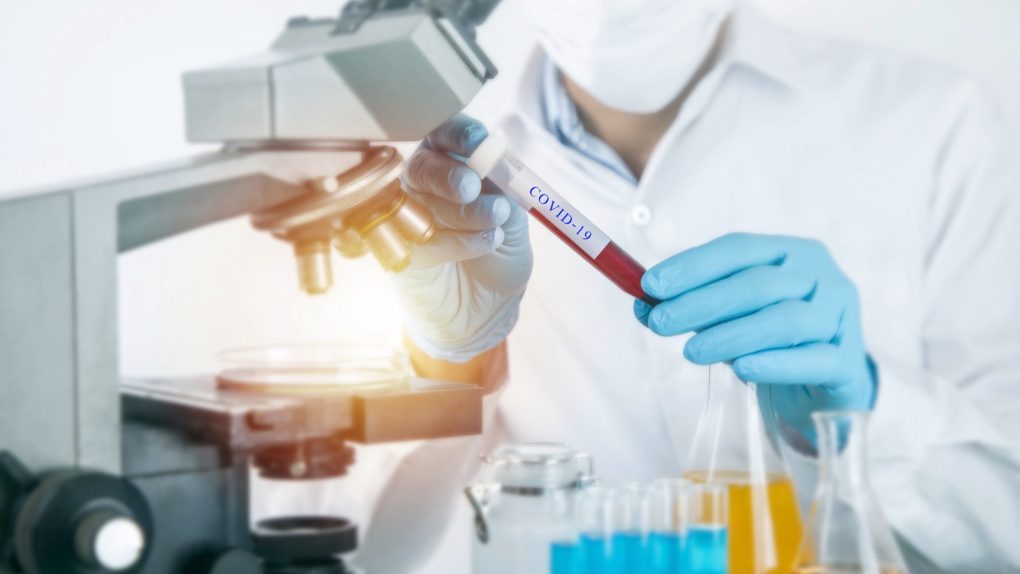- Synairgen’s SNG001 is a nebulizer containing interferon beta-1a that showed great promise in a recent Phase 2 trial. Volunteers who received the drug had greater odds of recovering from COVID-19 than placebo controls.
- The study did highlight a potential issue with the interferon therapy, as researchers found the drug favors the development of the kind of protein the coronavirus uses to infect cells.
- Upon further research, scientists from the University of Southhampton found that interferon and viral infections with other viruses favor the growth of short ACE2 receptors on the surface of respiratory cells. The coronavirus binds to a different type of ACE2 receptor — long ACE2 — and is unable to interact with the shorter version.
Some of the researchers looking for COVID-19 therapies that can improve the outcome of patients and reduce the risk of complications have developed an interferon-based nebulizer. Several studies have already explained that interferon plays a crucial role in the infection from pathogens, including the novel coronavirus. The SARS-CoV-2 virus can inhibit interferon after infecting the body, hindering the immediate immune response. Other doctors later discovered that apparently healthy patients suffering from undiagnosed interferon issues, including genetic problems, are more likely to develop complications from COVID-19.
A company called Synairgen partnered with the University of Southhampton to develop the SNG001 nebulizer. After a round of promising early testing in summer 2020, Synairgen announced Phase 2 results in mid-November. The researchers found that patients who received SNG001 were more likely to improve than the control group, but there was a major unexplained issue in their findings. The interferon beta-1a in the nebulizer seemed to increase the levels of ACE2 protein on the surface of respiratory cells in the upper airways where the coronavirus infects the first cells. This seemed to be a problematic issue that might actually promote the replication of SARS-CoV-2. However, the University of Southampton published a new study that explains exactly what happens.
The novel coronavirus binds to the ACE2 receptors found on the surface of cells in the nose, lung, and other organs: the more ACE2 proteins, the more potential binding sites for the virus. The SARS-CoV-2’s spike protein hooks up to ACE2 and then the virus enters the cell. That’s why the body develops neutralizing antibodies that can block that spike protein from interacting with ACE2 receptors. Monoclonal antibody drugs and several vaccines target the same spike protein.
The Southampton scientists conducted additional experiments to study the ACE2 receptors formed after the epithelia of respiratory cells is exposed to interferon, publishing their findings in Nature Genetics.
They discovered that the ACE2 receptors that appear at the exterior of cells are not identical to those that the coronavirus can link to. The short ACE2 receptors lack the viral binding site that allows the spike to connect to cells. Thus, the short ACE2 proteins that appear after exposure to interferon will not help the virus infect more cells. After the virus infects a cell and replicates inside it, the newly formed viral cells will seek other cells to infect, but their spikes will only link up to long ACE2 versions.
“We were excited to discover a new form of ACE2, and became even more interested when we realized that may be protective against SARS-CoV-2 in the airways rather than an entry site for infection,” professor Jane Lucas, one of the lead authors of the study, said in a statement. “We believe this may have important implications for managing COVID-19 infection, and we are starting further studies to investigate this further.”
The researchers discovered that the short ACE2 receptor that appears after interferon therapy is genetically different from the long ACE2 that the coronavirus needs. They also found that the short ACE2 protein will not appear in response to the infection with the novel coronavirus, so they’re not likely to be involved in the body’s immune response to COVID-19. The number of short ACE2 receptors did increase in response to a different respiratory virus. “Although the function of short ACE2 is unknown, its regulation by [interferon] suggests that it may play an essential role in innate antiviral defense mechanisms in the airways,” the researchers wrote.
The researchers also found that severe asthma patients have lower levels of long ACE2 than healthy controls, while short ACE2 was comparable between the groups. “It seems likely that this is linked to the inflammatory status of the airways and does not place people with asthma at greater risk of SARS-CoV-2 infection,” the study says. Interestingly, a previous study indicated that asthma patients might be less likely to contract coronavirus, although asthma is a risk factor for those asthmatics who do get COVID-19. SNG001 was initially developed as an asthma and COPD treatment.
Overall, the findings will certainly help the Synairgen SNG001 research to go forward. The drug would still have to clear Phase 3 trials to be approved for COVID-19 therapy.








